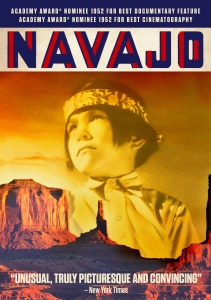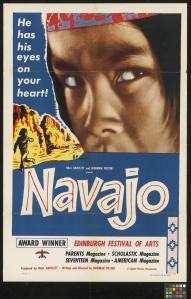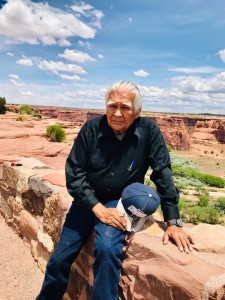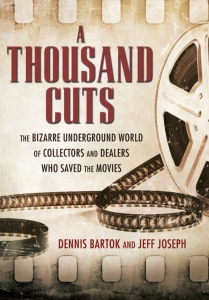What I’d give for one last Christmas party with our gang.
KPF began in 1971 as a 16mm non-theatrical distributor (colleges, libraries, schools, etc.), later expanding into theatrical distribution.
Blessings. There are many. The one I treasure the most is my first three decades of working with a wonderful team. It seems so long ago.
Most of Team-KPF were not classic movie buffs, at least at first. The prerequisite was to enjoy working with people and making customers happy. We had a great batting average.
The front office handled bookings, accounting, etc., and the back room did our film inspection and shipping. There were many challenges through the years, and everyone took them all on without complaints. For example, we acquired four libraries of former competitors along with massive studio inventories. It meant adding all those bookings, new customers and prints into our system. There was no Internet then, so customers relied on our printed catalogs. Thousands were printed and we had to mail them. Transitioning from booking with pencil and paper to computers was a challenge in of itself. All of this, in addition to normal day-to-day work, was accomplished seamlessly with our senses of humor intact!
Yes, it was stressful, so we set up a monthly mental health day where everyone had a day off to do anything they wanted. That was innovative in the 1980s. A masseuse came in once a month, too. No one called in sick that day. Actually, calling in sick was a rarity.
I meant to write a piece on the entire KPF team, but didn’t want to accidentally leave someone out. However, all KPF-ers will agree that the late Karen Kelly, Vice-President and General Manager, was the catalyst that held everything together. She was our caring and rock steady mother hen.
Twenty years ago, celluloid started to become technologically obsolete. No one wanted to book 75 pounds of film, when one DVD sported a beautiful picture and sound. It made sense to shut down film distribution altogether and reinvent KPF as a digital company releasing movies on DVD, Blu-ray, streaming and all forms of digital distribution. (more on that at a later date)
Closing the old film company took a year because we had so many commitments to exhibitors and the studios/producers. The agonizing part was worrying about what would become of my loyal team. Fortunately, everybody moved on to another good job. What a relief.
I moved to Arizona before the final closure, and left everything in the hands of general manager, Marci Krause. She turned the lights out for the last time and mailed me the key. End of an era.
I’m a hands-on film guy, so the last 20 years of working in the world of video has not been nearly so satisfying as the celluloid era, due in no small part because it is now just me, my computer and a dog asleep on the office sofa.
A lot of photographs of the old days were lost, but here is an assortment that survives thanks to always dependable, long-time team member, Clark Coleman.
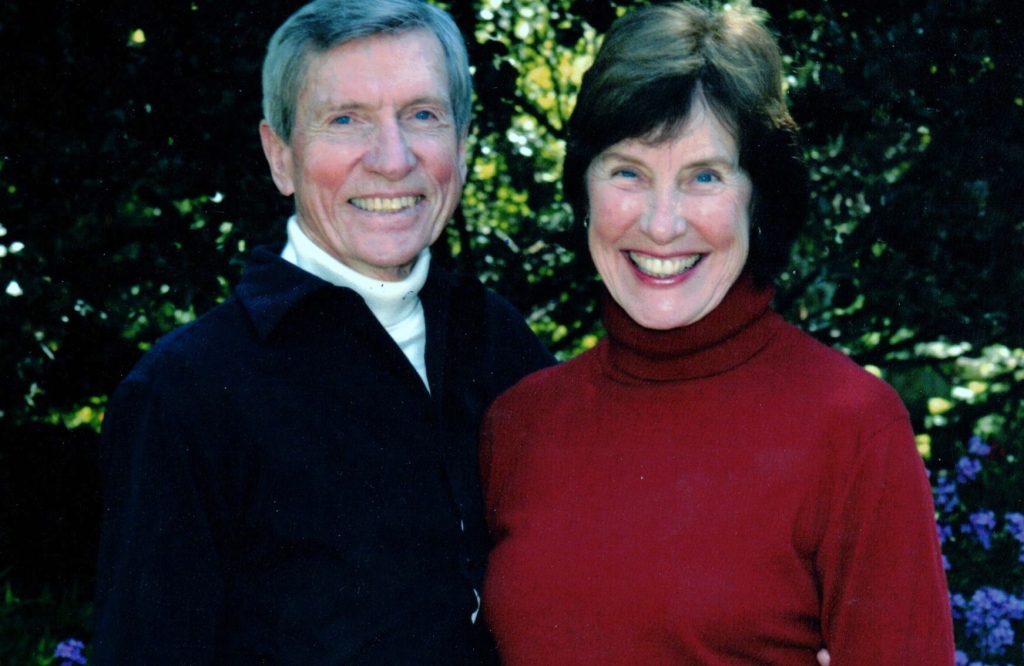
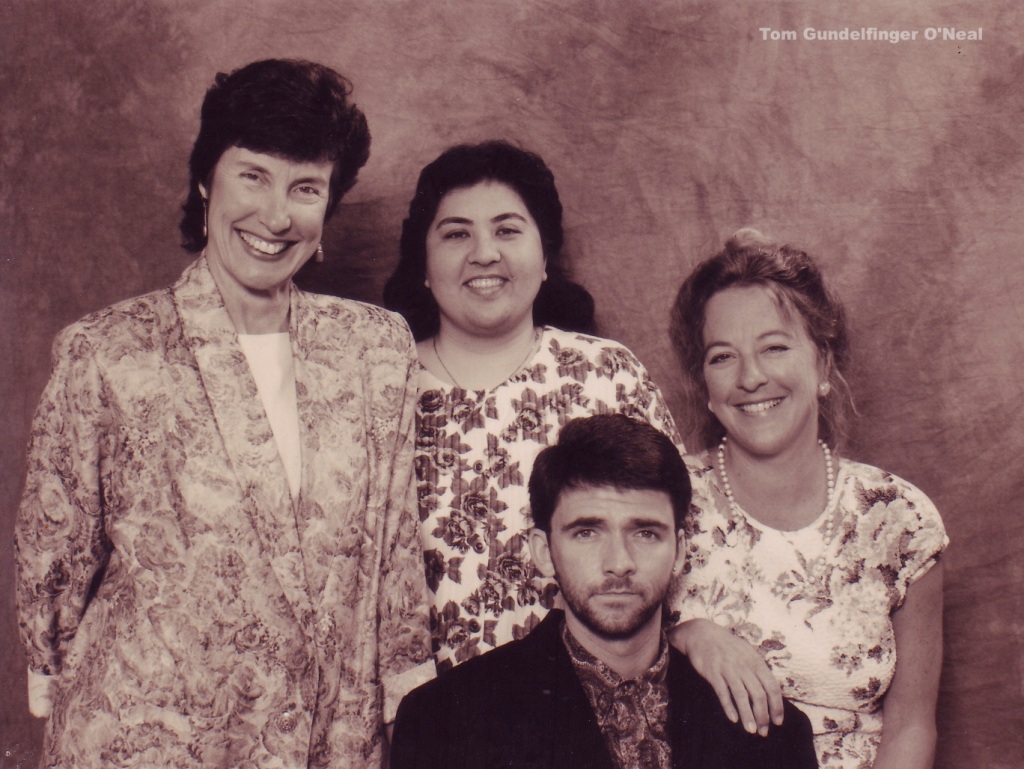

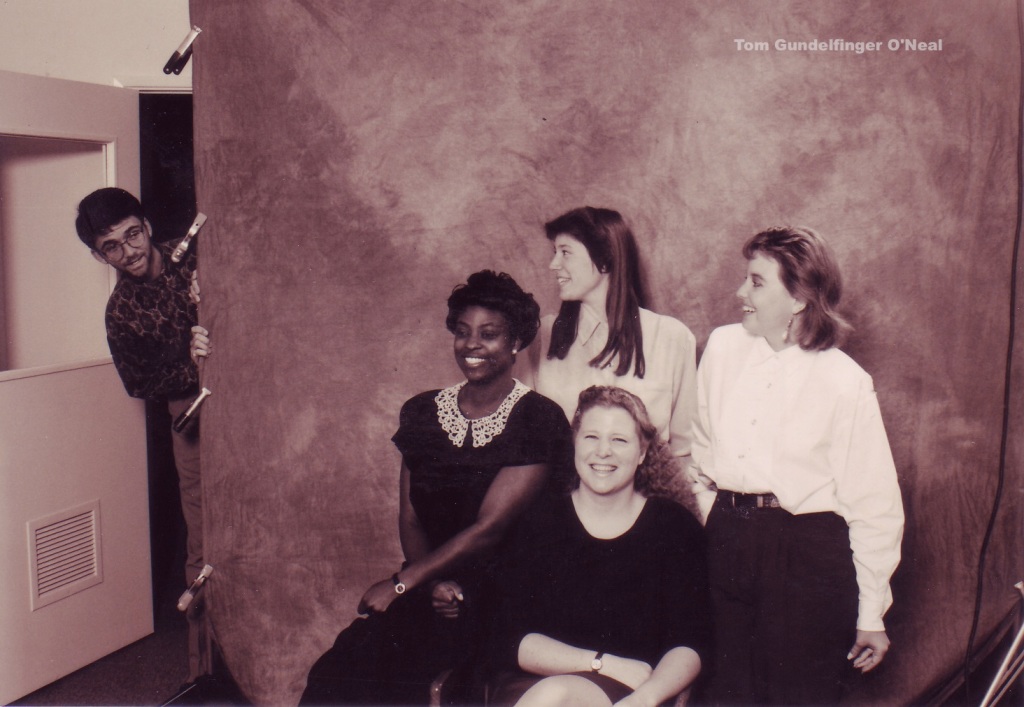
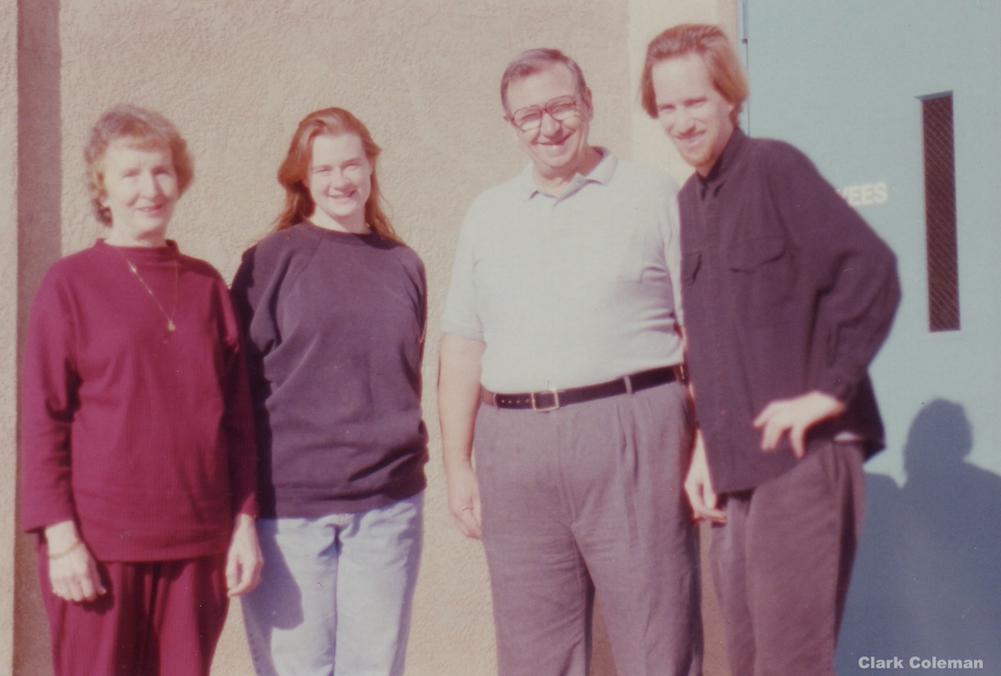


.
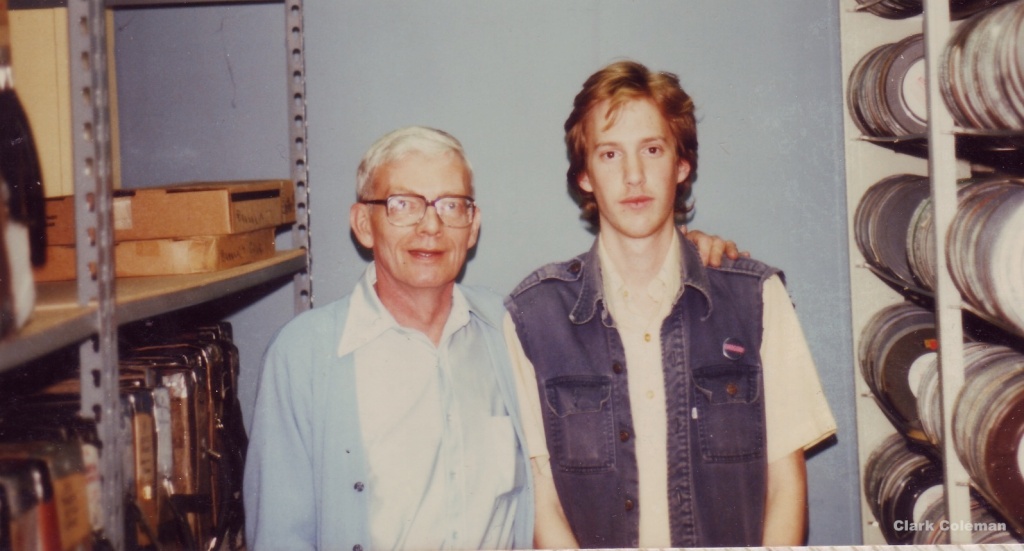

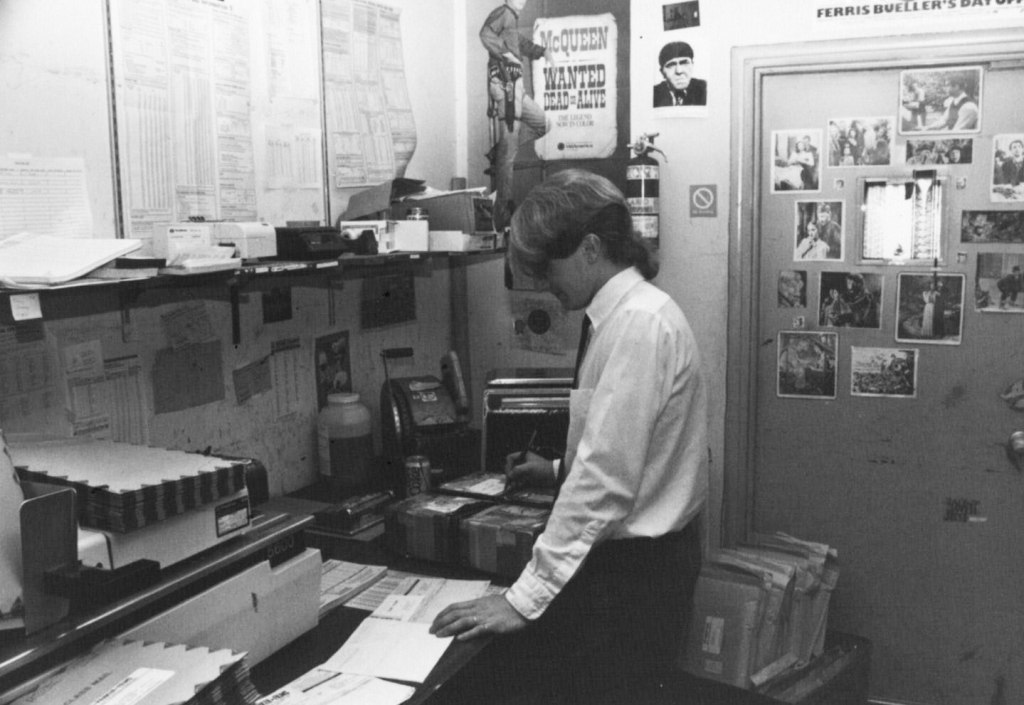
John Landaker
LIPPERT FILMOGRAPHY
Compiling this filmography more difficult because some Lippert films made after 1959 were not credited to any of Robert L. Lippert’s production companies.
“Hammer”: Exclusive Films/Hammer Films productions co-financed with Lippert Pictures.
Titles in bold are Lippert productions or co-productions; all others were distribution deals.
Key: R: Reissue, D: Distributor only, TV: Distributed to television only
Distributors: LP: Lippert Pictures, SG: Screen Guild Productions (subsequently known as Lippert Pictures), RS: RegalScope (Regal Films) thru Fox, API: Associated Producers, Inc., Fox: 20th Century-Fox, ARC: American Releasing (later known as AIP, American International Pictures), WB: Warner Bros., AFRC: Associated Film Releasing Corp. Note: RS and API are Lippert production companies financed and distributed by Fox.
- 13 FIGHTING MEN (1960) API-Fox
- 20,000 EYES (1961) API-Fox
- ABDUCTORS, THE (1957) RS-Fox
- ABOMINABLE SNOWMAN, THE (1957) Hammer, Fox
- ACTORS AND SIN (1952) LP-TV
- AIR PATROL (1962) API-Fox
- AIR STRIKE (1955) LP
- ALASKA PASSAGE (1959) API-Fox
- ALI BABA NIGHTS (R-1953) UK: Chu Chin Chow, 1934, LP-D
- ALLIGATOR PEOPLE, THE (1959) API-Fox
- AMBUSH AT CIMARRON PASS (1958) RS-Fox
- APACHE CHIEF (1950) LP
- APACHE WARRIOR (1957) RS-Fox
- ARSON, INC. (1950) LP
- AS YOU WERE (1951) LP
- BACHELOR IN PARIS (1952) UK: Song of Paris, LP-D
- BACK DOOR TO HELL (1964) US-Philippines, Fox
- BACK FROM THE DEAD (1957) RS-Fox
- BAD BLONDE (1953) UK: Flanagan Boy, Hammer, LP
- BADLANDS OF MONTANA (1957) RS-Fox
- BANDIT ISLAND (1953) 3-D Short Subject, LP
- BANDIT QUEEN, THE (1950) LP
- BAR 20 JUSTICE (R-1947) 1938, SG-D
- BARON OF ARIZONA, THE (1950) LP
- BATTLE AT BLOODY BEACH, THE (1961) Fox
- BELLS OF SAN FERNANDO (1947) SG
- BIG CHASE, THE (1954) LP
- BIG SHOW, THE (1961) API-Fox
- BLACK GLOVE, THE (1954) UK: Face the Music, Hammer, LP
- BLACK PIRATES, THE (1954) US-Mexico LP-D
- BLACK WHIP, THE (1956) RS-Fox
- BLACKOUT (1954) UK: Murder by Proxy, Hammer, LP
- BLOOD AND STEEL (1959) API-Fox
- BLOOD ARROW (1958) RS-Fox
- BORDER RANGERS (1950) LP
- BORDER VIGILANTES (R-1946) 1941, SG-D
- BORDERLAND (R-1946) 1937, SG-D
- BOY! WHAT A GIRL! (1947) SG-D
- BROKEN LAND (1962) API-Fox
- BUFFALO BILL RIDES AGAIN (1947) SG-D
- BURNING CROSS, THE (1947) They Ride By Night (1948 SG re-release) SG-D
- BUSH PILOT (1947) SG-D
- CABINET OF CALIGARI (1962) API/LP-Fox
- CALL IT MURDER (R-1947) Orig.: Midnight, 1934, SG-D
- CALL OF THE FOREST (1949) LP-D
- CAPTAIN KIDD (R-1952) 1945, LP-D
- CASE OF THE BABY SITTER (1947) SG
- CASSIDY OF BAR 20 (R-1947) 1938, SG-D
- CATTLE EMPIRE (1958) Fox
- CHINA GATE (1957) Fox
- COLLEGE CAPERS (1953) 3D short subject, LP
- COLORADO RANGER – TV: Guns of Justice (1950) LP
- COME BE MY VICTIM, half-hour TV abridgement of Danger Zone (1951), LP-TV
- CONVICTS AT LARGE (1938) LP-TV
- COPPER SKY (1957) RS-Fox
- COWBOY, THE (1954) LP
- CREEPING UNKNOWN, THE (1965) UK: Quatermass Xperiment, Hammer, UA
- CROOKED RIVER – TV: The Last Bullet (1950) LP
- CURIOUS ADVENTURES OF MR. WONDERBIRD, THE (1953) France: Bergère et le ramoneur, 1952, Dubbed, LP-D
- CURSE OF THE FLY (1965) Fox
- DALTON GANG, THE (1949) LP
- DANGER ZONE (1951) LP
- DAY IN THE COUNTRY, A (1953) 3-D short subject filmed in 1941 as Stereo-Laffs, LP-D
- DAY MARS INVADED EARTH, THE (1963) API-Fox
- DEAD MAN’S GOLD (1948) SG-D
- DEADLY GAME, THE (1954) UK, Third Party Risk, Hammer, LP
- DEATH VALLEY (1947) SG
- DEERSLAYER, THE (1958) (RegalScope prod.) Fox
- DEPUTY MARSHAL (1949) LP
- DESERT HELL (1958) RS-Fox
- DESIRE IN THE DUST (1960) Fox
- DESPERADOES ARE IN TOWN, THE (1956) RS-Fox
- DETOUR TO DANGER (1946) LP-TV
- DOG OF FLANDERS, A (1959) Fox
- DOOMED CARAVAN (R-1946) 1941, SG-D
- DRAGNET (1947) SG-D
- DRAGON OF DEATH, half-hour TV abridgement of Mask of the Dragon (1951), LP-TV
- DUKE OF WEST POINT (R-1948) 1938, SG-D
- EARTH DIES SCREAMING, THE (1964) UK, Fox
- ESCAPE FROM RED ROCK (1957) RS-Fox
- EVERYBODY’S DANCIN’ (1950) LP
- EYES OF THE JUNGLE (1953) LP-D
- FANGS OF THE WILD aka Follow the Hunter (1954) LP
- FAST ON THE DRAW – TV: Sudden Death (1950) LP
- FBI GIRL (1951) LP
- FELICIA (1964) API-Fox
- FIGHTING MEN (1953) Italy: Gli inesorabili (1950) dubbed LP-D
- FINGERPRINTS DON’T LIE (1951) LP
- FINGERPRINTS, half-hour TV abridgement of Fingerprints Don’t Lie (1951), LP-TV
- FIRE ALARM (1932) Orig.: Flames LP-TV
- FIREBRAND, THE (1962) API-Fox
- FIVE GATES TO HELL (1959) Fox
- FLAMING FRONTIER (1958) Canada, Fox
- FLESH AND LEATHER, half-hour TV abridgement of Stop That Cab (1951), LP-TV
- FLIGHT TO FURY (1964) US-Philippines, Feature Film Corp. of America
- FLIGHT TO NOWHERE (1947) SG
- FLIRTING WITH FATE (R-1948) 1938, SG-D
- FLY, THE (1958) (began as RegalScope prod.) Fox
- FOR MEN ONLY aka The Tall Lie (1952) LP
- FORTY GUNS (1957) Fox
- FRANCIS OF ASSISI (1961) API, provided guidance only, Fox
- FRECKLES (1960) API-Fox
- FRONTIER GAMBLER (1956) ARC
- FRONTIER GUN (1958) RS-Fox
- FRONTIER REVENGE (1948) SG-D
- FRONTIERSMEN, THE (R-1947) 1938, SG-D
- G.I. JANE (1951) LP
- GAMBLER AND THE LADY (1952) UK, Hammer, LP
- GANG WAR (1958) RS-Fox
- GHOST DIVER (1957) RS-Fox
- GHOST SHIP (1952) UK, 1951, LP-D
- GIRL FROM CALGARY, THE (1932) LP-TV
- GLASS TOMB, THE (1955) UK: The Glass Cage, Hammer, LP
- GOD IS MY PARTNER (1957) RS-Fox
- GOD’S COUNTRY (1947) SG
- GRAND CANYON (1949) LP
- GREAT ADVENTURE, THE (1951) UK: The Adventurers, TV: A Fortune in Diamonds, LP-D
- GREAT JESSE JAMES RAID, THE (1953) LP
- GREAT WHITE HUNTER, THE (R-1953) Orig.: The Macomber Affair,1947, LP-D
- GUNFIRE (1950) LP
- HAND OF DEATH , THE (1962) API-Fox
- HARBOR LIGHTS (1963) API-Fox
- HARPOON (1948) SG-D
- HAT BOX MYSTERY, THE (1947) SG
- HEART OF ARIZONA (R-1948) 1938, SG-D
- HEAT WAVE (1954) UK, House Across the Lake, Hammer, LP
- HELL HARBOR (1930) LP-TV
- HELL ON DEVIL’S ISLAND (1957) RS-Fox
- HELLGATE (1952) LP-D
- HERE COME THE JETS (1959) API-Fox
- HIDDEN GOLD (R-1948) SG-D
- HIGH POWERED RIFLE, THE (1960) Fox
- HIGHLY DANGEROUS (1950) UK, LP-D
- HIGHWAY 13 (1948) SG
- HI-JACKED (1950) LP
- HILLS OF OLD WYOMING (R-1946) 1937, SG-D
- HOLIDAY RHYTHM (1950) LP
- HOLLYWOOD BARN DANCE (1947) SG-D
- HOLLYWOOD THRILL-MAKERS (1954) LP-D
- HOLLYWOOD VARIETIES (1950) LP
- HOPALONG CASSIDY ENTERS (R-1946) Orig.: Hop-a-long Cassidy, 1935, SG-D
- HOPALONG CASSIDY RETURNS (R-1946) 1936, SG-D
- HOPALONG RIDES AGAIN (R-1946) 1937, SG-D
- HORROR OF IT ALL, THE (1964) UK, Fox
- HOSTILE COUNTRY – TV: Outlaw Fury (1950) LP
- HOUSE OF THE DAMNED (1963) API-Fox
- I SHOT BILLY THE KID (1950) LP
- I SHOT JESSE JAMES (1949) LP
- I’LL GET YOU (1953) UK: Escape Route, LP
- IN OLD COLORADO (R-1946) 1941, SG-D
- IN OLD MEXICO (R-1948) 1938, SG-D
- IRON MASK, THE (R-1953) 1929, Silent, with added sound track, LP-D
- IT HAPPENED IN ATHENS (1962) Fox
- JEWELS OF JEOPARDY, half-hour TV abridgement of The Roaring City (1951), LP-TV
- JOHNNY THE GIANT KILLER (1953) France, Jeannot l’intrépide, 1950, Dubbed, LP-D
- JUNGLE GODDESS (1948) SG
- JUNGLE, THE (1952) LP
- KENTUCKY JUBILEE (1951) LP
- KILLER DILL (1947) Strictly for Laffs (1951 LP reissue) SG-D
- KING DINOSAUR (1955) LP
- KING OF THE TURF (R-1948) 1939, SG-D
- KRONOS (1957) RS-Fox
- LAST MAN ON EARTH (1964) Italy-USA, AIP
- LAST OF THE WILD HORSES, THE (1948) LP
- LAST SHOT YOU HEAR (1969) Fox
- LAW OF THE PAMPAS (R-1948) 1939, SG-D
- LAW OF THE SEA (1931) LP-TV
- LEAVE IT TO THE MARINES (1951) LP
- LIFE WITH THE LYONS (1956) TV: Family Affair, D-LP/AFRC
- LIMPING MAN, THE (1953) UK, LP-D
- LITTLE BIG HORN (1951) LP
- LITTLE SAVAGE (1959) US-Mexico, API-Fox
- LITTLE SHEPERD OF KINGDOM COME (1961) API-Fox
- LOAN SHARK (1952) LP
- LONE TEXAN (1959) RS-Fox
- LONESOME TRAIL, THE (1955) LP
- LONG FALL, THE, half-hour TV abridgement of Pier 23 (1951), LP-TV
- LONG ROPE, THE (1961) API-Fox
- LOST CONTINENT, THE (1951) LP
- LURE OF THE SWAMP (1957) RS-Fox
- LYONS ABROAD, THE (1955) UK: The Lyons in Paris, TV: Mr. and Mrs. in Paree, LP-TV
- MAN BAIT (1952) UK: The Last Page, Hammer, LP
- MAN FROM CAIRO, THE (1953) Italy-UK-USA, guidance only, LP
- MARCH OF THE WOODEN SOLDIERS (R-1950) Orig.: Babes in Toyland, 1934, LP-D
- MARK OF THE LASH (1948) SG-D
- MARSHAL OF HELDORADO – TV: Blazing Guns (1950) LP
- MASK OF THE DRAGON (1951) LP
- MASSACRE (1956) LP-D thru Fox
- MIRACLE IN HARLEM (1948) SG-D
- MISS ANNIE ROONEY (R-1948) 1942, SG-D
- MISSING WITNESS, THE, half-hour TV abridgement of Fingerprints Don’t Lie (1951), LP-TV
- MONSTER FROM THE OCEAN FLOOR (1954) LP-D
- MORO WITCH DOCTOR (1964) Philippines: Amok, API-Fox
- MOTOR PATROL (1950) LP
- MOZART STORY (1948) Germany-Austria: Wen die Gotter lieben, 1948, Dubbed, SG-D
- MR. ROBINSON CRUSOE (R-1953) 1929 LP-D
- MR. WALKIE TALKIE (1952)
- MURDER GAME (1965) UK, LP-Fox
- MURDER, INC. (1960) Fox
- MY DOG SHEP (1947) SG
- NAVAJO (1952) LP-D
- ‘Neath Canadian Skies (1946) SG
- NIGHT TRAIN TO PARIS (1964) UK, Fox
- NORMAN CONQUEST (1953) UK: Mark Plaza 605, LP-D
- NORTH OF THE BORDER (1947) SG
- NORTH OF THE RIO GRANDE (R-1946) 1937, SG-D
- NORTHWEST TRAIL (1945) SG
- OMOO-OMOO THE SHARK GOD (1949) LP-D
- ON FOUR WHEELS, half-hour TV abridgement of Stop That Cab (1951), LP-TV
- OPERATION HAYLIFT (1950) LP
- OREGON TRAIL (1959) Fox
- ORIENTAL CLUE, THE half-hour TV abridgement of Mask of the Dragon (1951), LP-TV
- OUTLAW COUNTRY (1949) SG
- OUTLAW WOMEN (1952) LP-D
- OUTLAWS IN THE DESERT (R-1946) 1941, SG-D
- PAID TO KILL (1954) UK, Five Days, Hammer, LP-D
- PARTNERS OF THE PLAINS (R-1948) 1938, SG-D
- PERILS OF THE JUNGLE (1953) LP -D
- PHANTOM OF THE JUNGLE (1955) LP-D
- PIER 23 (1951) LP
- PIER OF PERIL, half-hour TV abridgement of Pier 23 (1951), LP-TV
- PIRATE SUBMARINE (1952) France: Casabianca,1951, dubbed, LP-D
- PIRATES ON HORSEBACK (R-1946) 1941, SG
- PRAIRIE, THE (1947) SG-D
- PLUNDER ROAD (1957) RS-Fox
- POLICE COURT (1932) LP-TV
- POLICE NURSE (1963) API-Fox
- PRIDE OF THE WEST (R-1947) 1938, SG-D
- PROJECT MOON BASE (1953) LP-D
- PURPLE HILLS, THE (1961) API-Fox
- QUEEN OF SHEBA, THE (1952) Italy: La Regina di Saba, 1952, Dubbed, LP-D
- QUEEN OF THE AMAZONS (1947) SG
- QUIET GUN, THE (1957) RS-Fox
- RACE FOR LIFE (1954) UK: Mask of Dust, Hammer, LP
- RACKETEERS (R-1948) Orig.: People’s Enemy, 1935, SG-D
- RADAR SECRET SERVICE (1950) LP
- RAIDERS FROM BENEATH THE SEA (1964) Fox
- RANGE WAR (R-1948) 1938, SG-D
- RED DESERT (1949) LP
- RENEGADE GIRL (1947) SG
- RENEGADE TRAIL (R-1948) 1939, SG-D
- RETURN OF GILBERT AND SULLIVAN, THE (1952) (Short Subject) UK, LP-D
- RETURN OF JESSE JAMES, THE (1950) LP
- RETURN OF MR. MOTO (1965) UK, Fox
- RETURN OF THE FLY (1959) API-Fox
- RETURN OF WILDFIRE, THE (1948) SG
- RIDE A VIOLENT MILE (1957) RS-Fox
- RIDERS OF THE TIMBERLINE (R-1946) 1941, SG-D
- RIMFIRE (1948) LP
- RINGSIDE (1949) LP
- RIVER BEAT (1954) UK, LP
- ROAD TO THE BIG HOUSE (1947) SG-D
- ROARING CITY (1951) LP
- ROCKABILLY BABY (1957) RS-Fox
- ROCKETSHIP X-M (1950) LP
- ROLLING HOME (1947) SG
- ROOKIE, THE (1959) (oversaw production) Fox
- RUNAWAY DAUGHTER (R-1948) Orig. Red Salute, 1938, SG-D
- RUSTLER’S VALLEY (R-1946) 1937, SG-D
- S.O.S. SUBMARINE (1948) Italy: Uomini sui fondo, 1941, Dubbed, SG-D
- SAD HORSE, THE (1959) API-Fox
- SANTA FE MARSHAL (R-1948) 1940, SG-D
- SAVAGE DRUMS (1951) LP
- SCARED TO DEATH (1947) SG
- SCOTLAND YARD INSPECTOR (1952) UK: Lady in the Fog, Hammer, LP
- SECRET OF THE PURPLE REEF, THE (1960) API-Fox
- SECRET OF THE WASTELANDS (R-1946) 1941, SG-D
- SECRET PEOPLE, THE (1952) UK, LP-D
- SEPIA CINDERELLA (1947) SG-D
- SEVEN WOMEN FROM HELL (1961) API-Fox
- SHADOW MAN, THE (1953) UK: Street of Shadows, LP
- SHE DEVIL (1957) RS-Fox
- SHEP COMES HOME (1948)
- SHOOT TO KILL aka Police Reporter (1947), SG-D
- SHOWDOWN (R-1948) 1940, SG-D
- SHOWDOWN AT BOOT HILL (1958) RS-Fox
- SHOWDOWN AT SUNUP (1949) Short subject, LP
- SIEGE, THE (1954) Spain, 1950, Agustina de Aragón, dubbed, LP-D
- SIERRA BARON (1958) Fox
- SILENT CALL, THE (1961) API-Fox
- SILENT RAIDERS (1954) LP-D
- SILVER ON THE SAGE (R-1947) 1939, SG-D
- SILVER STAR (1955) LP
- SIMBA (1955) UK LP-D
- SINS OF JEZEBEL (1953) LP
- SISTERS IN CRIME, half-hour TV abridgement of The Roaring City (1951), LP-TV
- SKY HIGH (1951) LP
- SKY LINER (1949) LP
- SLASHER, THE (1953) UK: Cosh Boy, LP-D
- SNIPER’S RIDGE (1961) API-Fox
- SON OF A BADMAN (1949) LP-D
- SON OF BILLY THE KID (1948) LP-D
- SON OF ROBIN HOOD (1958) UK (supervised) Fox
- SPACE MASTER X-7 (1958) RS-Fox
- SPACEWAYS (1953) UK, Hammer, LP
- SQUARE DANCE JUBILEE (1949) LP
- STAGECOACH TO FURY (1956) RS/Fox
- STAGECOACH WAR (R-1948) 1940, SG-D
- STEEL HELMET, THE (1951) LP
- STICK TO YOUR GUNS (R-1946) 1941, SG-D
- STOLEN FACE (1952) UK, Hammer, LP
- STOP THAT CAB (1951) LP
- STORM RIDER, THE (1957) RS-Fox
- STREET IS MY BEAT, half-hour TV abridgement of Stop That Cab (1951), LP-TV
- STRONGHOLD (1952) Mexico-USA LP-D
- SUNSET TRAIL (R-1947) 1939, SG-D
- SUPERMAN AND THE MOLE-MEN (1952) LP
- SURF PARTY (1964) API-Fox
- SWINGIN’ ALONG aka Double Trouble aka Johnny One Note (1961) Fox
- TALES OF ROBIN HOOD (1951) LP
- TALL TEXAN, THE (1953) LP
- TERROR SHIP (1954) UK: Dangerous Voyage, LP-D
- TERROR STREET (1953) UK: 36 Hours, Hammer, LP
- TESS OF THE STORM COUNTRY (1960) Fox
- TEXAS TRAIL (R-1947) 1937, SG-D
- THAT TENNESSE BEAT (1966) Fox
- THAT’S MY BOY aka Forbidden Music (R-1948) UK: Land Without Music, 1936, LP-D
- THERE IS NO ESCAPE (1948) UK: The Dark Road, SG-D
- THEY WERE SO YOUNG (1954) W. Germany-USA, LP
- THIRD VOICE, THE (1960) Fox
- THREE DESPERATE MEN (1951) LP
- THREE MEN FROM TEXAS (R-1946) 1940, SG-D
- THUNDER IN THE PINES (1948) SG
- THUNDER ISLAND (1963) API-Fox
- THUNDER OVER SANGOLAND (1955) LP-D
- THUNDER PASS (1954) LP
- THUNDERING JETS (1958) RS-Fox
- TOUGH ASSIGNMENT (1949) LP
- TRAIL DUST (R-1946) 1936, SG-D
- TRAIL OF THE MOUNTIES (1947) SG
- TRAIN TO TOMBSTONE (1950) LP
- TREASURE OF MONTE CRISTO (1949) LP
- TROMBA: THE TIGERMAN (1952) Germany: Tromba, 1949, Dubbed, LP-D
- TWELVE HOURS TO KILL (1960) API-Fox
- TWILIGHT ON THE TRAIL (R-1946) 1941, SG-D
- TWILIGHT WOMEN (1953) UK: Women of Twilight, TV: Another Chance, LP-D
- TWO GUN LADY (1955) D-LP/AFRC
- TWO LITTLE BEARS (1961) Fox
- UNDER FIRE (1957) RS-Fox
- UNDERCOVER AGENT (1953) UK: Counterspy, LP-D
- UNHOLY FOUR, THE (1954) UK: The Stranger Came Home, Hammer, LP
- UNKNOWN TERROR, THE (1957) RS-Fox
- UNKNOWN WORLD (1951) LP-D
- VALLEY OF THE EAGLES (1951) UK: Valley of Eagles, LP-D
- VALLEY OF THE REDWOODS (1960) API-Fox
- VARIETIES ON PARADE (1951) LP
- VILLA!! (1958) Fox
- WALK A TIGHTROPE (1964) US-UK, API-Paramount
- WALK TALL (1960) API-Fox
- WAYNE MURDER CASE, THE (1932) Orig.: A Strange Adventure LP-TV
- WE WANT A CHILD! (1954) Denmark: Viv vil ha’ et bam, 1949, Dubbed, LP-D
- WEST OF THE BRAZOS (1950) LP
- WESTERN PACIFIC AGENT (1950) LP
- WHERE THE NORTH BEGINS (1947) SG
- WHITE FIRE (1954) UK: Three Steps to the Gallows, 1953, LP-D
- WHITE GODDESS (1953) LP-D
- WHITE PHANTOM (1949) Short subject, LP
- WIDE OPEN TOWN (R-1946) 1941, SG-D
- WILD ON THE BEACH (1965) Fox
- WILDFIRE (1945) SG
- WINGS OF DANGER (1952) UK; Dead on Course, Hammer, LP
- WITCHCRAFT (1964) UK, Fox
- WOLF DOG (1958) RS-Fox
- WOMAN WHO WOULDN’T DIE, THE (1965) UK, WB
- WOMANHUNT aka Woman Hunt (1962) API-Fox
- WOMEN OF PITCAIRN ISLAND, THE (1956) RS-Fox
- YELLOW CANARY, THE (1963) Fox
- YES SIR, MR. BONES! (1951) LP
- YOUNG AND DANGEROUS (1957) RS-Fox
- YOUNG GUNS OF TEXAS (1962) API-Fox
- YOUNG JESSE JAMES (1960) API-Fox
- YOUNG SWINGERS, THE (1963) API-Fox
Sources: Motion Picture Herald, Film Daily Yearbook, U.S. Copyright Office, Maury Dexter, Robert L. Lippert, Jr., the Kit Parker Films-Lippert Collection at the Margaret Herrick Library, Academy of Motion Picture Arts and Sciences and Neil Roughley.
Stranded in the Navajo Nation
Posted on: October 14, 2020
Thank you John Ford
Several years ago, my wife, Donna, and I decided to take a trip through the Arizona portion of the Navajo (Diné) Nation. The Nation covers 27,413 square miles located mostly in Arizona, but also Utah and New Mexico. Monument Valley was on my (and any John Ford fan) bucket list. We also planned on visiting Canyon de Chelly (pronounced: DE-SHAY). As I said, the Nation is big, very big, but most of it is sparsely populated with quite a bit of poverty, particularly in the rural areas. By poverty, I mean the real deal: no running water, electricity or conventional forms of heating and cooling. 200,000 live on the reservation, two-thirds of the total members of the tribe.
Kayenta, Arizona is right in the center of it, the proverbial middle of nowhere, the last choice for a car to break down. My car limped into a gas station and the attendant said they had a terrific mechanic who would be back “soon.” I pressed him on when, to which he responded, “It could be today, tomorrow, two days or a week from now, we’re talking ‘Indian Time’.”

John Ford’s “Stagecoach” – Filmed in Monument Valley
Fortunately, Kayenta is close to Monument Valley, so Donna and I engaged a tour guide. Turned out we were the only ones on the tour, and the guide gave us special treatment, bringing us into the far reaches of the valley where tourists normally don’t go. (Tours must be conducted by Navajos) Our guide taught us things about Valley, and the Navajo way of life, past and present.
The gas station was my home for the next day and a half awaiting the mechanic. Customers would start pumping gas, and then come over and talk with me about all kinds of things. Every story was interesting; I learned a lot. The lack of jobs, poor access to healthcare, rampant use of drugs, and many Navajo school children lived so far out of town and their kids often had 90 minute bus rides to and from school.
Several times I walked around the town. Its supermarket was like any other with the exception of row and rows of paper plates, plastic cups, forks, etc. You can’t wash dishes without running water. There was another row as far as you could see with sugary drinks. One in five Native Americans has diabetes. Many of the older people spoke only in Navajo, and some women wore beautiful traditional dresses adorned with turquoise jewelry.
The Black Mesa Twin Theater was showing the latest Star Wars movie. I saw a long line of patrons entering the theater, but the exit doors were padlocked from the outside. When I asked the manager how can people leave, he said there was no problem because they unlock the exit doors when the movie ends. Not sure what the fire marshal would say.
Eventually the mechanic showed up and fixed the problem in ten minutes. By that time we needed to get back to Phoenix, so had to forego Canyon de Chelly…for the time being.
Several years later we decided to plan another trip to the Canyon. It’s located near Chinle, Arizona, known for friendly, upbeat people and one of the lowest crime rates in the entire United States.
Canyon de Chelly and is extraordinarily beautiful, with gorgeous rock formations. We took another tour hosted by a Navajo guide. Again, learned a lot.
When we returned home, I started thinking about the docudrama, “Navajo” (Lippert, 1952), filmed in the de Chelly area. It’s the story of a seven-year-old Navajo boy who stoically endures hardship, hunger and the death of his family. He is taken away to attend a white man boarding school and escapes, but is pursued into ancient Navajo caves in the Canyon. The working title was “The Voice of the Wind,” and despite a shoestring $30,000 production budget, a threatened ban by the Indian Service, harsh weather and terrain, infighting between the co-producers, the picture went on to earn universal critical acclaim. Simple narrated story, beautifully photographed; none of the usual Indian stereotypes.
The boy, played by seven-year-old Francis Kee Teller, did not speak English and had never seen a movie before. A translator gave director’s wishes to the boy. Nonetheless, his performance garnered him a special Golden Globe. Although it is a drama, it was nominated for an Oscar® for Best Documentary Feature.
 Publicity tie-in with Santa Fe Railroad**
Publicity tie-in with Santa Fe Railroad**
I learned that the Academy Film Archive (part of the Academy of Motion Picture Arts and Sciences) had preserved the film, so arranged to have a 2K transfer made with the goal of putting it out on DVD. The picture and sound turned out great.
Always on the lookout for special features, I had hoped to locate someone who was around during the filming of the movie. Maybe even hit the jackpot and find someone who worked on it, or actually in it – a real long shot.
Following up on a tip, I called a man in his 70s living on the reservation who purportedly was in the movie. Turns out it was Francis Kee Teller, himself, and he would be happy to record a commentary track!
Soon after, we trekked up to the Canyon again to meet Mr. Teller, a friendly, dignified, soft spoken gentleman with many interesting stories to tell.
I like to produce commentary tracks with the interviewee in front of a TV and simply run the picture without sound, hoping for extemporaneous comments about whatever memories come up.
Teller’s recording went well, but I wanted more extra features.
Although “Navajo” was beautifully filmed in black and white (received an Oscar® nomination for Best Cinematography)*, it made sense to include a tour of the same locations, only in color.
Mr. Teller said his niece, Deborah Lem, was a good photographer, and she agreed to produce a photo-essay of the Canyon. It turned out Deborah had a gift for photography, and went so far as to trek into the areas seldom photographed, including Fortress Rock and Massacre Cave. Her photos of poignant petroglyphs are a highlight. She tells about the painful massacre of women and children, and the infamous “long walk,” in 1864 where Navajo’s were forced to walk 250 – 400 miles to New Mexico on foot. It is estimated 200 died of starvation and the elements, all due to the Army’s cruel relocation campaign. (They were eventually allowed to return home)
Deborah also recorded an interview with her friend, Genny Yazzie, who lives and farms in the Canyon as did her ancestors. The title of the piece is “The Canyon Matters,” and is accompanied with more beautiful photographs by both Deborah and Genny.
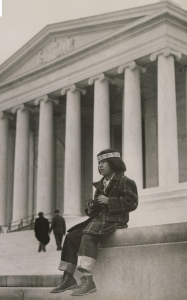 Young Teller at the Smithsonian**
Young Teller at the Smithsonian**
The Margaret Herrick Library, part of the Academy of Motion Picture Arts and Sciences, had series of photographs taken of young Teller as part of a publicity campaign to tout the movie in New York and Washington D.C. I obtained copies, and had Mr. Teller, who had never seen them before, shared his memories of each one.
On eBay, I bought a mint copy of a Kodachrome documentary, “Our Navajo Neighbors,” coincidentally also filmed in 1952. It’s included, as well.
“Navajo,” is unlike other movies one expects from Kit Parker Films, but my car breaking down in the middle of nowhere provided the seed for one of my most interesting and personal projects. All profits are being donated to Navajo charities.
“Unusual, truly picturesque and convincing” – New York Times
*Cinematographer Virgil Miller started out in silent pictures and became known primarily for filming travelogues. He had a reputation for keeping cameras rolling in remote locations under adverse weather conditions. The producers needed a cameraman with those qualities, and tracked him down at a camera shop where he repaired photographic equipment. At age 64, Miller took on the challenge of working in freezing cold, with only one camera, a tripod and four reflectors, and came away with an Academy Award® nomination, and a full spread in the prestigious American Cinematographer.
**Photos courtesy of Academy of Motion Picture Arts and Sciences Margaret Herrick Library
Watching Movies on the Mess Deck
Posted on: June 20, 2019
I speak from experience.
USS Enterprise (CVA-65) (Wikipedia)
In the late 1960s, the Viet Nam (presently referred to as “Vietnam”) war was going full blast and I worked at a television station, first as a film editor and then technical director. Each day, I looked in my mailbox dreading a letter from the Selective Service ordering me to appear for induction. Tried to get into the Navy Reserve, which would make me a non-target for the Viet Cong, but I wasn’t the only one — there was an 18 month waiting list. Eventually a letter arrived, but not from the Army, it was the Navy – I’d been accepted! Never figured out why…maybe did well on some long forgotten test.
I survived basic training in San Diego with a designation to become “JO”*, the Navy abbreviation for the “Journalist” rating. Odd on one hand because I never made more than a “C” in English, but ultimately made sense because JOs also operated ships’ entertainment radio and television stations, my expertise. There weren’t many JOs in the Navy and most were stationed at Navy bases or on large ships like aircraft carriers under the aegis of the Public Affairs Office. Among other duties, JOs churned out press releases, produced daily newspapers, monthly magazines, sent stories to hometown newspapers and radio stations letting let the folks back home know what their boys were (supposedly) doing.
The nuclear-powered aircraft carrier USS Enterprise (CVA-65) was the pride of the fleet; 90,000 pounds, a flight deck of two and a half football fields and a population of 5,500. That’s where I was ordered to report for a two year (1969-71) ordeal.
Fortunately, because of my JO rating, I was assigned to manage the entertainment TV and radio stations, but we were in dry dock most of the time and that meant the stations did not operate. Ended up writing articles and doing other public affairs duties, which I wasn’t very qualified to do.
One of my few good memories as a sailor aboard the Enterprise, were the nightly movies – feature films, not training films warning us about what not to do on shore leave, but actual current feature films. Side note: Venereal disease prevention films (one going back to WWII) were supposed to instill that we had thirteen chances to say “no.” (Uniforms had thirteen buttons in the front — get it?)
The movies, as in feature films, were distributed by the Navy Motion Picture Service (NMPS), which started in 1936 and continues to this day providing filmed entertainment movies to the fleet. It isn’t controlled by the Navy, but by civilian employees of the Navy Exchange Service (equivalent of an Army PX). NES funds NMPS with the profits from its retail stores. During my tour of duty, its headquarters were located at the Brooklyn Navy Yard. The story goes that the surrounding area was so dangerous that it was safer in Vietnam.
During WWII, studios provided free prints to the armed forces. Movies are still occasionally released to the military before their theatrical release. “The Big Sleep” (1946) is a notable example of when the military received an earlier/longer cut than eventually released to theaters. (Both versions are available on Blu-ray)
Later on, studios started charging NMPS and its Army/Air Force equivalent, the Army and Air Force Motion Picture Service (AAFMPS) licensing fees. The studios submitted titles subsequently categorized them as “A,” “B,” “C” or “Classics,” and priced them accordingly. In 1970 “Patton” was an “A,” “Soldier Blue” a “B” and “Hercules in New York” a “C.” “Classics” weren’t always classics per se, but anything older than 10 years. “Broken Lance” (1954) and “The Sheriff of Fractured Jaw” (1958) (liked ‘em both) come to mind.
NMPS bought at least 365 full length, uncut movies a year. 16mm prints came in reinforced olive drab shipping cases with the title stenciled on the side, a designation “a” or “p” for Atlantic or Pacific, and “std” or “cs” – Standard or CinemaScope (fortunately NMPS never bought “pan and scan” prints). Placed between the case straps was a rectangular book with a waterproof cover identifying the movie. Its lined pages allowed a chronological list of users and the projectionists giving their opinions of the condition, “New,” “Very Good,” “Good,” “Fair” and “Poor – OOS” (out of service). (Prints were discontinued years ago and today encrypted DVDs are supplied which only operate on NMPS players.)
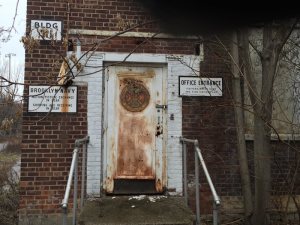 (Ghost of the NMPS HQ — Atlas Obscura)
(Ghost of the NMPS HQ — Atlas Obscura)
The Navy Motion Picture Exchanges (NMPX) were located all around the world. They had racks of films and a row of automatic inspection machines designed to stop on defects, giving the civilian inspectors an opportunity to repair torn sprocket holes, breaks, etc. They were sleek and modern looking, around $6,000 each, which would be over $39,000 now. Kit Parker Films had six in its heyday. Splicers, on the other hand, were workhorses made by Griswold identical to the ones made in the 1930s, which was a memorable contrast to someone like me who enjoyed handling films.
Each reel was affixed with hold-down tape in a different color depending on which reel, e.g. “NMPX Reel 1,” “NMPX Reel 2,” down the line, and “Short Subject.” No identification as to the name of the movie or reel number was written on the leader…only the tape. You’d think placing the wrong tapes on leaders would be a given, but it seldom happened. (AAFMPS used paper reel bands) Shorts accompanied features running under 90 minutes, but the operators seldom showed them as they were normally on a separate reel. I only saw one, a lackluster travelogue, and only because it was spliced onto the first reel of the feature, “Day of the Badman.” Both were black and white prints of color films.
By and large, prints were good, although the main titles were sometimes scratched due to the tradition among projectionists to pull the leader down and thread right on the title. No matter where I traveled, they always did that. If the end title was damaged, it was replaced with a WWII vintage black and white fourth-generation dupe, with a scene of a cottage and tree in the background. Saw one on “You’re a Big Boy Now.”
 (JAN Projector – 16mm Film Forums)
(JAN Projector – 16mm Film Forums)
The military used heavy metal JAN (Joint Army-Navy) projectors manufactured by DeVry. that withstood being dropped down steel steps and still operate. Saw it happen. They were good machines although would sometimes get out of alignment and scratch the sound tracks, which sounded like motorboats. Most JAN’s had the option of placing a special cable between units allowing for professional changeovers, but were only utilized on infrequent occasions when an Admiral was on board. His stateroom could be converted into a quasi theatre. The only time an Admiral was on board, he took it upon himself to ban all showings of “Rosemary’s Baby” (1968). I recently told two retired Admirals that story and got amazed looks from both.
On shore, we had three movies at a time and unlimited sports programs (no interest to me) and TV shows like “Mannix.” “Dailies” were heavy demand titles, usually with sexy scenes, which had to be brought back to the exchange the next day. I sat through “The Night they Raided Minsky’s” beside a sailor who constantly jabbed me with his elbow telling me to watch for a “big surprise,” which turned out to be an abrupt splice followed by an audience groan. Thought about that incident years later when watching “Cinema Paradiso.” The most popular movie by far was “Barbarella.” A distant second was “Cool Hand Luke.”
If smaller ships were at sea for a long time they could exchange prints with others by way of a high line. The Enterprise was much too high to do that, but fortunately, we had room to store a lot of prints. (Submarines had a maximum of 40 – 45 prints, resulting in repeat showings during long deployments)
Navy tradition called for the Officer of the Day (OOD) to select which movies went to which group: Officers, Chiefs and Crew. This was sometimes a problem as the OOD had bigger fish to fry than select movies. Instead of a logical rotation allowing each group to see all three movies, the OOD often picked the best ones for the officers each night. One time they watched “M*A*S*H” three times in a row, the Chiefs saw “Kelly’s Heroes,” and the sailors were stuck with “Macbeth” with Nicol Williamson. (On aircraft carriers, it was much too dangerous to sit on the flight deck, so Officers saw movies in their wardroom, Chief Petty Officers in the Chief’s Mess and the crew either near or in the crews mess…occasionally on the hangar deck. Smaller ships operated in a similar way, sans hangar deck. I was on a 20 man minesweeper for a couple of weeks, and we all watched movies in the one, small, common area.
WWII and Korea vets told me that movies would sometimes be shown on deck, occasionally using portable 35mm projectors with incandescent lamps.
The guys who worked on the flight deck had the hardest jobs, and tended to be crude; used the F-word as a noun, verb, adverb and adjective in a single sentence, and prided themselves on being macho. That said, I went to see Zeffirelli’s “Romeo and Juliet,” and when the lights came on a bunch of these guys sat there looking uncharacteristically sad. One finally said something: “That was a pretty f—– good movie.”
The overall experience of watching movies on shipboard was somewhat noisy and the benches uncomfortable, but there were enough of them to go around, except for “Barbarella.”
Notes:
Movies Kit Parker Films Licensed to NMPS —
My one and only relationship with NMPS was 25 years ago when I licensed several classics to them: “The Fighting Seabees,” “Little Big Man,” “The Enforcer” (1951), “The Quiet Man,” “Monterey Pop,” and a few others. The Admiral who banned “Rosemary’s Baby” in 1970 would have been apoplectic over “Monterey Pop.”
Navy Shore Theatres —
The NMPS continues to serve traditional Navy movie theatres around the world. The only one I frequented the Basilone Theatre located at Treasure Island on San Francisco Bay. 35mm — super wide screen – Tom and Jerry Cartoons — families’ present, so no raucous behavior. Nice! A scratchy old National Anthem trailer always preceded the show with the last note cut off from repeated use.
 (Long-abandoned Basilone Theatre — Cinema Treasures)
(Long-abandoned Basilone Theatre — Cinema Treasures)
See what’s available on DVD/Blu-ray — www.sprocketvault.com – and don’t forget to Like us on Facebook and subscribe to our YouTube Channel.
© 2019 Kit Parker Films
Tom Dunnahoo of Thunderbird Films was one of the more picaresque characters I dealt with in the 1970s. His company specialized in making 16mm copies of public domain films; the quality was good, at least at first, and I bought dozens for Kit Parker Films. Tom also duped copyrighted movies and sold them under the table along with prints of classic and current movies he got from God knows where. Money aside, selling pirated movies probably gave him more satisfaction because he enjoyed getting away with shady things. Even before his last sordid years, Tom was the type you felt like washing your hands after shaking his. Still, I enjoyed communicating with him, at least for a while. He’s one of many outliers of this industry who deserves a footnote. Author Mark Thomas McGee* actually worked for Thunderbird and he graciously agreed to write a guest blog. — Kit Parker
If you’re a baby boomer and a film collector, then you may have heard of Tom Dunnahoo, the owner of Thunderbird Films, one of the first companies to offer public domain films to the public. For about six months, I worked for Tom as his CEO but I don’t believe Steve Jobs would have fared any better managing Thunderbird than I did because nobody could manage Tom.
Most people who run a shady operation keep low profiles, but not Tom. I begged him not to return the cease and desist letter he got from Disney with his BULLSHIT stamp on it, just as I begged him not to do the interview with (I think it was) Bill Stout from the Channel 5 news team, but Tom was determined to commit suicide. In 1971, four years before I came on board, Tom was one of the first to be arrested by the FBI for selling dupe prints of copyrighted films. While I was in his employ, we sold a number of classic titles—Citizen Kane, Psycho, Kiss Me Deadly—to name just a few. The FBI finally shut him down for good around 1977, the year the Los Angeles Times ran “Confessions of a Hollywood Film Pirate,” in which Dunnahoo bragged that he was “a pusher, selling fixes to film junkies.” In the picture that accompanied the piece he wore a pirate patch.
To be fair to Tom, he wasn’t playing with a full deck. I don’t know this to be true, but I heard that he’d suffered brain damage as the result of an automobile accident, which would help explain his stutter and a lot of other things. I chose to believe that story because it was the only way I could make sense out of the fact that he’d been married to a classy woman whose name, I believe, was Teri. She simply couldn’t have married the Tom that I knew. He must have been a different guy. I knew Teri slightly because she still had her hand in the business. She liked me. She told Tom he’d better keep me. I put together to first Thunderbird catalog that was divided into categories, with the titles listed alphabetically. “T-This is r-really fantastic. Thanks,” Tom told me. “B-But I-I-I’m afraid I-I-I’m gonna have to l-let you go.” No warning. No severance play. No nuthin’. Except my memories, which I am happy to share with you.
It began with Steve Barkett, a fellow I met at a party. He was the general manager of Thunderbird at the time and offered me the shipping job. Once he was satisfied that I could handle it, he jumped ship and took off with my wife. Though I thought at the time that I had gotten the short end of that deal, I have since come to the conclusion that they both got what they deserved.
Let’s begin this trip down memory lane by focusing on the name of the company—Thunderbird Films—affectionately known as Blunderbird Films by those of us in the know. If I remember correctly, Tom’s logo was the mythological Native American bird, but a bottle of Thunderbird wine would have been more appropriate. We all dreaded those nights when Tom would take it upon himself to make the dupe negatives because he’d get drunk on Drambuie, screw it up, pass out on the floor, and we’d be stuck with the results. Once a negative was made, that was it, no matter how terrible it was.
“There’s a f-f-fucking f-f-film f-fan in e-every trashcan,” he loved to say. That’s where Tom got most of his prints, from film fans who would give him a 35mm print of something in exchange for one in 16mm or 8mm.
The office was a three bedroom home in Eagle Rock. The lab was a few blocks away in an industrial zone. There were four of us in the office and three or four guys at the lab. As Tom was always overextending himself, there was never enough in the account to make payroll, so we’d all race to the bank in the hope of getting there before the well went dry. Those of us working in the house had the advantage over the guys in the lab because the lady who cut the checks also worked out of the house.
The fellow in charge of the lab was an old guy named Morgan, who for some reason refused to print the titles that I asked for, the titles that people had ordered, and instead ran off copies of titles that were already stacked high on the shelves in the store room, titles we’d never be able to sell. The result of his stubbornness, besides the drain on the available income, was a stack of back orders. I did manage to deplete our supply of 8mm copies of Ecstasy, which had pretty much run its course. We sold one copy the entire time I was there, to a gentleman who returned it, saying that he wanted his money back. Not because there was anything wrong with it, but because he was offended by the nudity. I wrote him back a very nice letter explaining why I was returning the film to him but not his money. He got what he ordered, and it was hardly a secret that Hedy Lamarr had a nude swimming scene in the film. He returned it again with an angry letter. “Excuse me, Mr. McGee, but I don’t have your expertise when it comes to pornography.” I returned the film to him, and continued to send him a new copy every day for the next three weeks.
But there were plenty of customers with legitimate complaints. Heaven help you if you ordered something that Tom had anything to do with, but you pretty well took it in the shorts when you ordered one of our color titles. Morgan was color blind so naturally he was the one in charge of color balance. And I lost track of the number of returned prints that wouldn’t run through anyone’s film gate. Why? Because 8mm film is really 16mm sliced in half, and Morgan never checked the splitter to make sure it was adjusted properly. “It takes too much time,” he told me. That’s Thunderbird logic in a nutshell.
When I first took over as the manager, I was still the shipper. Tom let me hire a friend of mine, who did the work, but I had to fire him because Tom met some lady at the supermarket. She was on disability but if ever there was a goldbrick it was this ragamuffin. And she was worthless. In a week’s time she managed to wrap (but not ship) two packages.
All of a sudden another misfit showed up, roughly my age, and I never found out what he was supposed to do. Every so often he would sit in my office and sing a song that he’d composed. Because of the number of times I heard it, I remember it well. “I like those blue movies. They’re the only ones I see. I like those blue movies, because they make me horneee.”
I can’t say when it happened, but suddenly the place was crawling with low tide, all of them doing absolutely nothing but interfering with those of us who were trying to get something done.
“Y-You wanna know w-where to p-pick up foxy chicks? The supermarket. Around midnight,” Tom once told me with a wink, and maybe that’s where all of these people came from. It wasn’t Beverly Hills. I can tell you that. A lot of people like to say they work in a madhouse, but I can tell you, having visited someone in a madhouse once, Thunderbird could hold its own.
In 1980, Tom was arrested and later convicted of molesting two five year olds who were living with him at the time. If you want to know more, please feel free to look it up on the internet, People v. Dunnahoo. Me, I want to know less.
—————————————————————————————————————————-
Footnotes from Kit: Tom’s lab did pretty good work, and I sent him a copy of “Ben Hur” to duplicate, but the FBI seized it in a raid. I should mention it was the one-reel 1907 silent one-reel version, obviously in the public domain. Not every FBI agent is a movie buff. (They eventually returned the film to me)
*Books by Mark Thomas McGee: https://www.amazon.com/Mark-Thomas-McGee/e/B001KMIUV8?ref=sr_ntt_srch_lnk_11&qid=1558206585&sr=1-1
Other recommended reading:
Thunderbird Films commercials:
https://m.youtube.com/watch?v=AEXqNuXiQR0
Hollywood studios v. Tom Dunnahoo:
https://www.casemine.com/judgement/us/59149208add7b0493459287c
The Sprocket Vault for DVD’s and Blu-rays:
Plan 9 from Wade Williams
Posted on: March 17, 2018
“I just turned 9 years old, and from the moment the film “Flight to Mars” (1951) opened with the reddish background and two men looking through a telescope…I was hooked.”
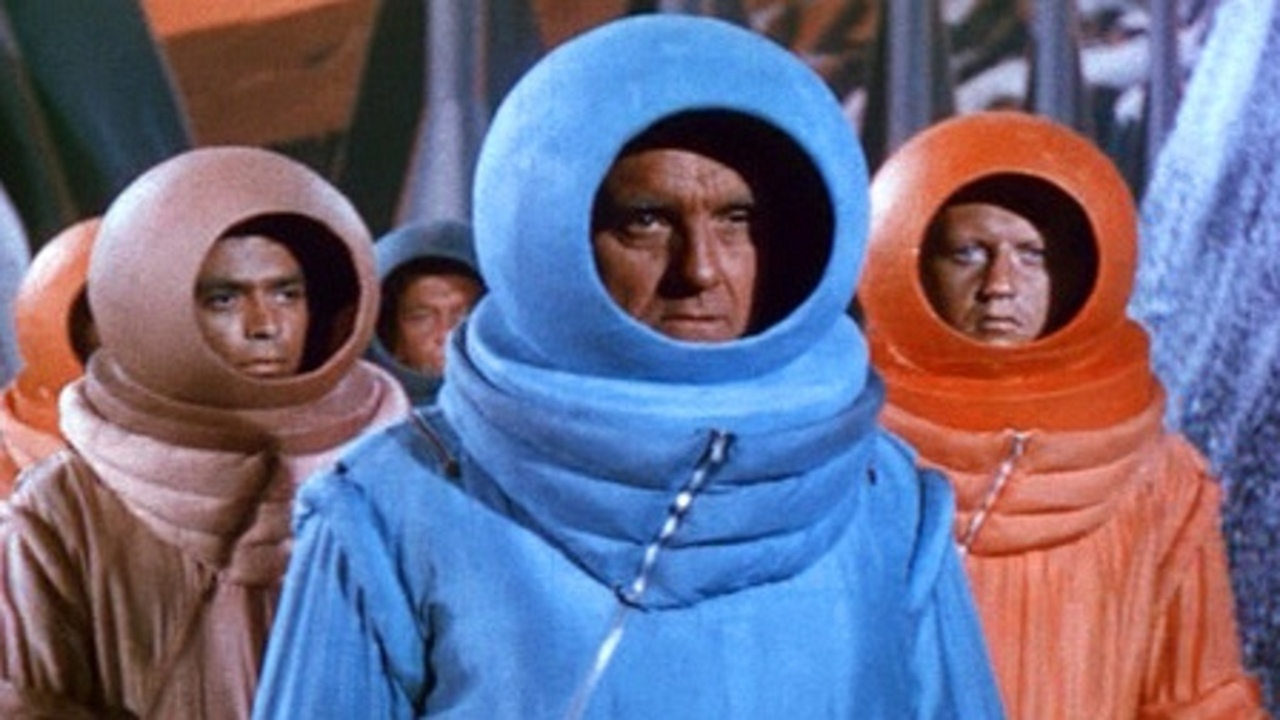
Wade turned his love of science fiction movies, into a repository of fan favorites – “Invaders from Mars,” “Plan 9 from Outer Space” and so many others — as well as a successful business.
In a previous blog I referred to him as a vintage sci-fi movie impresario, exhibitor, director and producer, but he’s also an old friend, “since Christ was a child,” to steal a typical Wade one-liner.
In 2015 I visited Wade in his hometown of Kansas City MO. He was a gracious host, making made sure I had plenty of authentic K.C. barbeque. His second-story office was filled with authentic movie props, primarily from gold-standard 1950s sci-fi movies. Below it, a 100 seat theatre adjacent to a vast personal film collection; it looked like the Library of Congress…row after row of 35mm prints of classic movies as far as you could see. We talked about all-things-movies for nearly an entire memorable weekend. Learned facts I never knew, like he originally wanted to be an actor. Wade’s a very interesting guy with an incredible memory; I’ll never forget that weekend.
Wade’s passion for 50s science fiction movies would make a great book, if only he would write one. Nevertheless, thanks to producer and interviewer, Joshua Murphy, you can hear much of Wade’s story in a “19-reel” condensed version by simply sitting down in your easy chair and listen to Murphy’s interview with Wade on YouTube. It consists of two 90+ minute segments. Listen to half-now, or drain your iPad battery and eat the whole box of chocolates in one sitting – that’s what I did.
Part 1:
https://www.youtube.com/watch?v=0wQVUfvoDfQ&t=34s
Part 2:
https://www.youtube.com/watch?v=ytSkLXWeK4g
We also got on the subject of the Oscars. Here’s what he had to say:
“I have watched the Academy Awards yearly since the 1950’s They were fun shows when all the stars were on their best behavior. The films were inspiring, entertaining, thought provoking, and the music was delightful.
That was April 3rd 1978 at the Dorothy Chandler Pavilion, I was lucky to have been there at the 50th Golden Anniversary of OSCAR. A lot has changed in 40 years.
I was seated in the Orchestra Row Y Seat 28 next to my date, actress and friend, Osa Massen of “Rocketship XM” fame. Osa was a longtime member of the Academy and on the foreign film nominating committee.
The Red Carpet was there 40 years ago but not as wide. We were packed “bumper to bumper” so to speak. The crowd moved along slowly and scores of ushers were seating people at a record pace. The line pushed back for an instant and everyone stumbled back a foot or so, and I stepped on the instep of the woman in line behind me. I turned around to apologize and was looking into the face of Barbara Stanwyck. She said “don’t worry, no damage done “.
Fans along and outside the barricades were yelling at the stars. One woman kept yelling “Michael, Michael, Michael.” She was yelling at me. I shook my head, no. She said, “You are Michael Caine!” That was a new one.
So many stars were there that night:
Bob Hope was the MC and some of the presenters were Fred Astaire, Bette Davis, Olivia De Havilland, Kirk Douglas, Farrah Fawcett, Joan Fontaine, Greer Garson, Janet Gaynor, William Holden, Steve McQueen, Barbara Stanwyck, Natalie Wood, Raquel Welch, King Vidor, Olivia Newton-John and Mickey Mouse. Added to that were r2d2, Mark Hamill, c3po, and John Travolta.
Debbie Reynolds, Jane Powell, Aretha Franklin, Sammy Davis Jr and Debbie Boone entertained in the musical department.
Films like “Star Wars” and “Close Encounters of the Third Kind,” had many nominations along with “Annie Hall,” “Turning Point,” “Julia” and “Goodbye Girl,”
Best Actress Nominations – Anne Bancroft, Diane Keaton, Shirley MacLaine, Marsha Mason and Jane Fonda.
Best Actors – Woody Allen, Richard Burton, Richard Dreyfuss, Marcello Mastroianni, and John Travolta
Best Picture – “Annie Hall,” “Goodbye Girl,” “Julia,” “The Turning Point,” “Star Wars.”
Don’t ask me who won in all the categories I can’t remember. Google it!”
http://www.wadewilliamscollection.com
Visit The Sprocket Vault’s site regularly and sign up for our email list.
Keep up to date with our new Sprocket Vault releases by liking us on Facebook
www.facebook.com/sprocketvault/
Also, be sure to subscribe to our YouTube channel:
Face to Face with Manson
Posted on: December 2, 2017
“Manson was happy his voice and music would be on the sound track”

An old friend, Wade Williams, well known vintage sci-fi movie impresario, and gatekeeper to such fan favorites, as “Rocketship X-M,” “Plan 9 from Outer Space” and the original “Invaders from Mars,” is a successful exhibitor, director and producer. Sometimes being a producer can put you face to face with…well, let Wade tell the story:
————————————
The passing of Charlie Manson, the mastermind of the murderous Manson Clan that terrorized and murdered Sharon Tate and others in Los Angeles on August 9, 1969, brought back vivid memories of meeting him – face to face!
Days went by after the murders until a break in the case led the police to this group of “drugged out” hippies who lived in a deserted old-time movie ranch.
Manson and the rest of the clan were arrested and went to trial on what must stand as the most notorious murder rampage of its time. The trial lasted weeks and the news media from all over the world covered it.
Living in Kansas City and wanting to get into the movie business was hard. I was midway between Hollywood and New York. I had made an amateur science fiction film “Terror from the Stars” several years before, but it never got distribution because it was, frankly, not well made, and we did not know what we were doing or how to do it right.
Frank Howard was a director/cinematographer/film-friend worked for an industrial film company in Minnesota who I had met thru my film collecting hobby. Frank was brilliant; he knew lighting, how to tell a story, and was a fan of the 30’s-40’s studio films and directors like Capra, Henry King and the Selznick films. He was in his late 30’s at the time and I am not sure he is still living. We lost track of each other decades ago.
During dinner at Winstead’s in Kansas City, the people in the table behind us were talking about the Manson murder trial and how horrible it was.
Frank said – Why don’t we make a “quickie” film in black and white based on the Manson Murders since the trial will probably go on awhile. It could play the drive-in circuits. We talked about the possibilities for several hours and the next day started on the pre-production planning.
I did not want to make this film. I was not into drugs or that lifestyle and I had little or no interest. I wanted to remake science fiction films like “The Man from Planet X,” “Rocketship XM,” etc. It was Frank Howard’s and my dream to make a cheap and highly profitable film, and use the money to make something worthwhile.
We scripted daily as more information was revealed at the trial. I named it “The Other Side of Madness” on its first release. They changed the name to “Helter Skelter Murders” after the book “Helter Skelter’ became a best seller.
The film was to be shot in Kansas City and Los Angeles. The substantiating footage in L.A. and the murder sequences at various locations in Kansas City, Missouri, Leawood, Kansas and a rock concert near Lawrence, Kansas, all subbing for LA.
There was an announcement in the trade papers, and I received a call from Charles Manson’s attorney who was representing him for free, and getting a lot of flak. He wanted to sell me the rights to two songs recorded and sung by Charlie Manson, “Mechanical Man” and “Garbage Dump.”
The deal was $2000 for the rights and a three-hour face-to-face meeting with Charlie Manson in the jail during the trial. Manson could have no visitors except witnesses necessary for his defense. I was listed by his attorney as one of those witnesses.
Manson was happy his voice and music would be on the sound track. I actually had not heard the music at that time.
It was arranged the following Friday. I flew to LA with cash. I was given the recording masters and taken to the jail house to meet with Manson.
The master he gave me was an LP he made to promote the songs. He knew Terry Melcher, a record producer and son of Doris Day. Manson was angry because apparently Melcher would not release his music, so sent the clan up to terrorize the occupants thinking Melcher would be there.
I was told by Manson’s attorney to not question him about the murders, especially not discuss the actuality of what happened at the murder scene because Manson was not at the Tate house, and anything he said might be used against him.
I expected to see a sinister Rasputin monster of a man depicted on the cover of Life Magazine instead, I was seated at a table across from Charlie in a regular room. A guard stood by the door.
In was a small man, maybe 140 pounds in blue jailhouse garb. I introduced myself. He said, “You’re the man that’s making my movie?” There was nothing sinister about him other than wild hair. I realized the news media and Life magazine had re-touched his picture to make him look like the Devil in order to sell magazines.
He talked about the people at the 500 acre Spahn Movie Ranch. (Eighty-year-old George Spahn allowed him and his family to stay there). One of his followers was the granddaughter of the Mitchell Camera fortune. She and other Manson family followers were in our film at the ranch. The ranch burned down not long after.
Manson talked about him giving shelter to the homeless and downtrodden, most of which were druggies and acid users. He also was into group sex and would get his “family” all drugged up beforehand and in the barn loft would have all-night sex with both males and females.
(We shot a sequence in the loft of the barn and on the property after his description and some of his “family” was in the film.)
He used the “N” word several time, despising blacks having been in prison with them. He and his family wanted a “race war” to exterminate them, and was gathering weapons out in the desert to eliminate them. His attorney changed the subject after a few comments.
We cast the film with unknown look-a-likes from Kansas City: family members, friends, several actors and my secretary with sequences on the Plaza subbing for Century City.
Getting it finished and released in theaters is a completely other story, however the film was distributed world-wide, got a front page story in Variety and in London. It had many good reviews, and made news in tabloids worldwide. We did a sneak Preview in Excelsior Springs MO to a sold out theater.
Frank Howard’s efforts and talent made this a unique “arthouse” film noir that has a moody black and white feel and a Technicolor sequence, with Debbie Duff and Kelly Cap, who played Sharon Tate and the Prince in a dream sequence.
It played the drive-in theater circuits and the home use VHS and DVD markets.
Looking back at the box office reports, the film out grossed many studio films at the drive-in theaters, and did extremely well on VHS and DVD for various distributors. They all made a lot of money. I was happy to get my investment back.
I plan to re-release it when the Quentin Tarantino film on the Manson murders comes out in 2019.
Charlie Manson was not unique, not sinister, just a small time thug on acid who ordered his hippie clan to go terrorize some people.
–Wade Williams
www.thewadewilliamscollection.com
Visit The Sprocket Vault’s site regularly and sign up for our email list.
Keep up to date with our new Sprocket Vault releases by liking us on Facebook
www.facebook.com/sprocketvault/
Also, be sure to subscribe to our YouTube channel:
https://www.youtube.com/c/TheSprocketVault
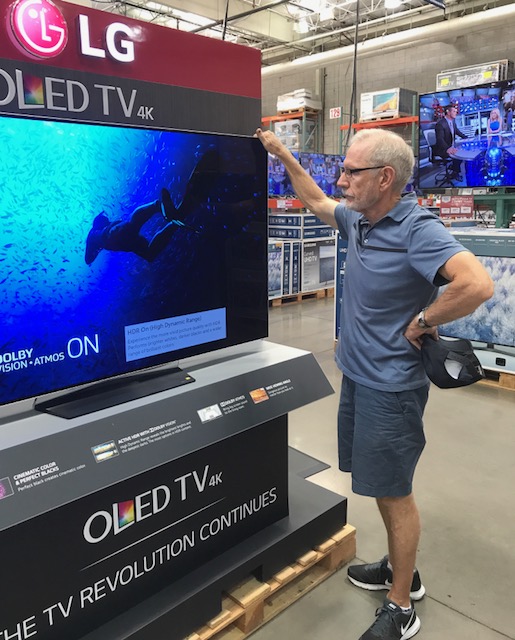
It started with a friendly email from a customer with a 60” 4K TV asking about “vertical interlacing” he noticed on the VCI release of “One Million B.C.”, which we are selling on Amazon.
I decided to be scientific and went to a Phoenix Costco to look at the entire line-up of big screen TVs, not just 4K. There they were — monumentally sharp and bright, featuring sports, travelogues of the Great Wall of China, swimming with dolphins, a “Transformer” movie and “Minions.”
I’d seen these razor sharp monitors before, but only in passing on my way to the DVD/Blu-ray aisles.
For the first 30 years of my career, I QC’d thousands of 16mm and 35mm prints. If they weren’t good, back to the laboratory, they went. The labs accused me of rejecting more prints than other distributors. Probably true. Sure, I couldn’t hold a 1940 independently produced B movie to the same standards as a studio classic. If I did, a good many worthwhile films just wouldn’t be seen.
Holds true today, but now there are all kinds of digital tricks to eliminate or which we used to have to do solely “photochemically” (i.e. on film), not always with satisfactory results.
Digital video noise reduction (DVNR) is the catch-all name for fixing “video noise” such as black or white dirt specs and light scratches, but it can be like walking a tightrope: Too little DVNR and some imperfections remain – too much DVNR and the image looks more like a video game than a movie-movie. Years ago, I got my first taste of DVNR run amok. It was a DVD of the 1933 Boris Karloff thriller, “The Ghoul,” and after five minutes, I was reaching for the X-box controller.
Independent producers usually needed money in hurry, and often used the original negative to make prints – a bad idea — instead of creating elements made for the express purpose of protecting the original negative. Further, indie productions often changed owners – each interested in making a quick buck — kicking the can down the road inasmuch as preserving film elements was concerned.
The Hal Roach library is a prime example, especially the Laurel and Hardy films — which fortunately are being given gold standard restorations. “One Million B.C.” is a Roach production that changed hands many times, and desperately needed a full restoration, which fortunately it received some years ago by the UCLA Film and Television Archive. This is the version VCI transferred to digital and subsequently made fix-ups to make the movie look even better than the photochemical restoration. This digital master was used to replicate DVDs and Blu-rays.
I QC Sprocket Vault releases at home using a 50” 1080 LED with a 10’ CTS “couch to screen” – according to www.hdtvtest.co.uk the minimum setback distance should be at least 6’.
VCI QC’s theirs using a 43” Sony LCD from both 5’ and 11’ (no “couch”!) – minimum setback should be at least 5.5’.
Both my home and VCI’s screening rooms were designed to replicate small media or living rooms where imperfections would be more noticeable because pixels and digital anomalies are more visible the closer you sit to a TV. The average TV is 55” (7.5’ min. recommended setback), but most people watch them in larger rooms. As a result, both VCI and I have received very few complaints about digital issues through the years. BTW, Bob Blair, president of VCI, told me he is going to start QC-ing on a larger, sharper TV.
VCI has released hundreds of movies over the past 40 years, and doesn’t always bat a thousand, but close to it.
However, some forum members were out for VCI’s blood, savaging them to the point of suggesting they be drummed out of business.
VCI informed me they tried to recreate that vertical interlacing but were unable to figure out how it was originally introduced to the digitally restored master. They suspect their previous video noise reduction software, which had been subsequently upgraded, may have caused it.
My policy is to refund a customer’s money – sorry, no blood — if they aren’t satisfied with their purchase. Bob Blair, president of VCI, agrees, but he still financed an expensive re-do of “One Million B.C.” and will send copies to any dissatisfied customers.
“Were movies made to be this sharp?” If you’re talking about those produced on film, by and large NO; classics and older films, definitely NO. Certainly, the pre-digital filmmakers, and certainly the old masters, never intended the viewer to see every pore in Judy Garland’s face, or the Creature from the Black Lagoon’s zipper. Today, of course, they airbrush on makeup.
The beauty of a good movie is you can project yourself into it, not the other way around. Some filmmakers (Martin Scorsese’s “Hugo” comes to mind) have been able to give you both experiences at the same time.
I may be living in the past, but to me super sharp TVs are more geared for sports, travelogues, reality shows, and science fiction/action films that are low on script and high on CGI.
Oh, ultimately, my Costco experience was extremely disappointing, and it had nothing to do with my tour of those state of the art TV’s. It was their DVD/Blu-ray aisles. Did I say “aisles”? Maybe one “aisle”? No…just one carton.
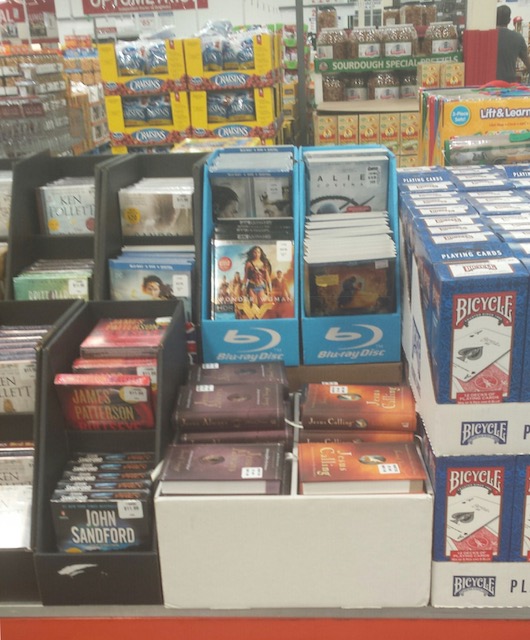
Keep up to date with our new Sprocket Vault releases by liking us on Facebook www.facebook.com/sprocketvault/
Visit our site regularly and sign up for our email list.
Also, be sure to subscribe to our YouTube channel:
It’s been widely reported that the vast majority of millennials have not watched a black and white movie all the way through, if at all.
I can tell you from my personal experience with Netflix that one of the main reasons older/classic films on Netflix are rapidly declining is because they hired people in their 20s to do the programming – techies and/or MBA’s with no film background. To them “old” and “classics” were interchangeable, so it wasn’t surprising for them to literally or figuratively close their eyes, touch a list and – bingo – selection made. That’s why you got “classics” like “Blood of Dracula’s Castle” instead of “Dracula” — “Psycho” (1998) instead of “Psycho” (1960) – hey, newer in color must be better. (According to Newsweek there are just 43 movies on Netflix streaming made before 1970)
I can hear the scheduling conference in Silicon Valley now, “Any of you hear of this ‘Dumbo’ from Disney? Sounds boring. Hey, they also have “Operation Dumbo Drop,” perfect – lot of poop jokes so we can double it up with ‘Superbad’.” (I did say 20-somethings.)
What happened next? These “so-called” classics failed to generate viewers, and the wet behind the ears film buyers went to their superiors with the proclamation “no one wants classics.”
Amazon Prime Instant Video still offers at least a semblance of classics, but it’s a combination of the usual third generation public domain movies we’ve seen in every big box store’s dollar bin, and a lot of lackluster quasi-classics again selected by title. No different from Netflix. Don’t blame the studios — they license classics affordably — so it isn’t a matter of money.
Remember the saying when cable and satellite expanded and we said “300 Channels and nothing to see?” Now it’s 1,000 channels, and one to see – TCM.
The owners of classics — major studios as well as minor leaguers like myself — all expected a world of hundreds of channels on cable, later satellite, and then download/ streaming to mean new outlets for older films, called “library titles” in the biz. Didn’t happen. Instead, we got reality shows and their never-ending spinoffs. Setting aside movies for the moment — try and find a good selection of TV shows made before 1980.
There are 76 million baby boomers (born between 1946 and 1964) living today, and 79 million Generation Xrs (b. 1965-80). Hollywood and Silicon Valley are ignoring the entirety of Boomers, and a chunk of Xr’s, is one reason DVD and Blu-ray sales of older films and television series continue to sell briskly.
As we proudly attest on The Sprocket Vault website http://www.sprocketvault.com, you’ll find a varied collection of DVDs and Blu-rays in almost every genre ranging from classics, the not-so-classics, and countless hours of entertainment in-between.
And I should add: “Movies You Won’t Find on Netflix!”
Here’s the Newsweek article:
http://www.newsweek.com/2017/09/22/netflix-streaming-movies-classics-664512.html
Keep up to date with our new Sprocket Vault releases by liking us on Facebook www.facebook.com/sprocketvault/
Visit our site regularly and sign up for our email list.
Also, be sure to subscribe to our YouTube channel:
Memoirs of a Film Collector
Posted on: September 16, 2017
I still love running celluloid through my fingers, and was fortunate enough to find a way to turn my modest Laurel and Hardy collection into a thriving 45+ year career.
The oddest film collectors and dealers make for fascinating psychological profiles. You’ll learn why, and a lot more, by reading Dennis Bartok and Jeff Joseph’s book, “A Thousand Cuts” (University Press of Mississippi/2016), with the subheading, “…the bizarre underground world of collectors and dealers who saved the movies.”
I lived through the film collecting heyday, and knew collectors and dealers, at least by correspondence, and most of the ones in Dennis and Jeff’s book by reputation. Believe me, you couldn’t make them up!
This blog started out as a book review, but ended up as a memoir. It brought back so many memories that I decided to share some with you. A complete description of the book follows my trip down a bizarre memory lane.
I attended a few movie buff conventions in the 1970s, “Cinecon,” was the best for silent and early talkies, and The National Film Society,” usually specialized in the 1940s and 50s.
They were there – the collectors — sometimes lived with Mom, had some semblance of a theatre in the basement, and hoarded celluloid as if it were air itself.
In the early 1970s, the convention attendees ran the gamut of age. It was fun to see people passionate about old movies and their film collections. I “spoke film,” as did they, and loved to join in the conversations.
However, by the early 80s, when I took my wife to a couple of these events, the more eccentric of the bunch were starting to look a little odd. Mismatched clothes, pale skin, paunchy, and only seemed to talk about their treasured prints. “IB Tech,” “adapted scope,” “dupe,” “reduction print,” and “Kodak original,” seemed to be in every other sentence.
She couldn’t understand people endlessly discussing the merits of Cinecolor, and moreover, just who was Raymond Rohauer, and why did everyone want him dead?
By the 2010’s when Dennis Bartok and Jeff Joseph started writing their book, some of the collectors still lived in the same houses they grew up in. Mom was long gone, curtains closed, and their cherished film stacked like an obstacle course throughout the house. I know one collector who used every bit of floor space and resorted to using his kitchen counters and half of his double-sink. Like I said, you couldn’t make this stuff up.
As the years progressed, sitting endlessly in the dark, presumably eating movie theatre food, took a toll on their health to the point that picking up heavy reels and operating a projector became difficult, or impossible.
Let’s back up. Long before DVDs and Blu-rays, before VHS, if you wanted to collect movies and show them in your home, it had to be on 16mm film. A few collectors even had 35mm (even 70mm) setups in their homes, which gave them major bragging rights. 16mm was used everywhere video/digital is now; non-theatrically (schools, libraries, universities, airlines, summer camps, you name it) and television. Prints weren’t cheap to manufacture, and the studios didn’t make copies for collectors…so a black market was created, the more desirable the film, the higher the price.
Entrepreneurs with a bit (or a lot) of larceny found ways to steal or make copies of varying degrees of quality to sell to eager buyers. “The Big Reel,” was a tabloid full of ads enticing collectors to buy, sell or trade thousands of prints in each issue; I loved reading it. According to the book, at one time there were 4800 subscribers, so we know there were at least that many collectors. A lot of the film dealers (don’t get me going on Thunderbird Films) were shady at best and worthy of a blog themselves. No need for that, just read Dennis and Jeff’s book.
Apart from the very few who actually deprived studios or television and non-theatrical distributors* by using bootleg prints commercially, or out-and-out stole them from television stations or film exchanges, collecting film had a benign effect on studio profits. You could buy 16mm movies legitimately from companies like Blackhawk Films, but they were predominantly silent movies and talkie shorts. As a kid, I saved my money to buy 8mm, later 16mm, Laurel and Hardy shorts from Blackhawk. Jeff Joseph did the same thing, which makes us kindred spirits.
But, politics and hysteria got involved. The Motion Picture Association of America (MPAA) conjured up out of whole cloth an absurdly high amount of money the collectors were stealing from the studios. The inevitable witch hunt commenced, the FBI called in, and some film collectors (actor Roddy McDowall was the most high profile) were arrested, and their collections seized. This whole legal travesty, a dark side of the Justice Department, was eventually overturned in court. A friend and mentor, Al Drebin of Budget Films, had a lot of films taken, only to receive a call years later from the FBI, “What do you want us to do with all of this film of yours?” He got his films back, but I guess they forgot to reimburse him for all the legal fees he racked up defending himself.
It was routine for studios to throw out footage they felt was worthless. Of course, no celluloid is worthless to a film collector, and their midnight dumpster diving has turned up one of a kind riches we now enjoy on DVD. Things like deleted scenes, stereo sound tracks, missing footage, or even whole movies. Thank you, film collectors.
“A Thousand Cuts,” is so deftly written that those without a whit of film knowledge will enjoy the book for its character studies, alone. Had it not been for Dennis and Jeff, this entire subject would probably have been lost to history.
Below is a description of the book as copied from the dust jacket:
A Thousand Cuts is a candid exploration of one of America’s strangest and most quickly vanishing subcultures. It is about the death of physical film in the digital era and about a paranoid, secretive, eccentric, and sometimes obsessive group of film-mad collectors who made movies and their projection a private religion in the time before DVDs and Blu-rays.
The book includes the stories of film historian/critic Leonard Maltin, TCM host Robert Osborne discussing Rock Hudson’s secret 1970s film vault, RoboCop producer Jon Davison dropping acid and screening King Kong with Jefferson Airplane at the Fillmore East, and Academy Award–winning film historian Kevin Brownlow recounting his decades-long quest to restore the 1927 Napoleon. Other lesser-known but equally fascinating subjects include one-legged former Broadway dancer Tony Turano, who lives in a Norma Desmond–like world of decaying movie memories, and notorious film pirate Al Beardsley, one of the men responsible for putting O. J. Simpson behind bars.
Authors Dennis Bartok and Jeff Joseph examine one of the least-known episodes in modern legal history: the FBI’s and Justice Department’s campaign to harass, intimidate, and arrest film dealers and collectors in the early 1970s. Many of those persecuted were gay men. Victims included Planet of the Apes star Roddy McDowall, who was arrested in 1974 for film collecting and forced to name names of fellow collectors, including Rock Hudson and Mel Tormé.
A Thousand Cuts explores the obsessions of the colorful individuals who created their own screening rooms, spent vast sums, negotiated underground networks, and even risked legal jeopardy to pursue their passion for real, physical film.
Order it from Amazon: https://www.amazon.com/Thousand-Cuts-Bizarre-Underground-Collectors/dp/1496807731/ref=sr_1_1?ie=UTF8&qid=1504826067&sr=8-1&keywords=a+thousand+cuts+book
*In the old Kit Parker Films non-theatrical days, a collector under the guise of a bogus “museum,” rented just about everything we had concerning Nazis. Things like “Triumph of the Will,” and the mini-series, “Holocaust.” After a while we noticed none of them were returning. Each time we’d call there was an excuse. Even Marci Krause, a member of the KPF team known for getting prints back, couldn’t succeed. I suggested Marci call this “museum curator” and tell him Mr. Parker found a big box of one of a kind Nazi concentration camp home movies, and would they be of value to the “museum.” Of course, the proviso was first he had to return all of our films. They arrived the next day by FedEx, along with a call, “Did you send the concentration camp movies?” Marci’s response was “Gotcha.”
Keep up to date with our new Sprocket Vault releases by liking us on Facebook www.facebook.com/sprocketvault/
Visit our site regularly and sign up for our email list.
Also, be sure to subscribe to our YouTube channel:
